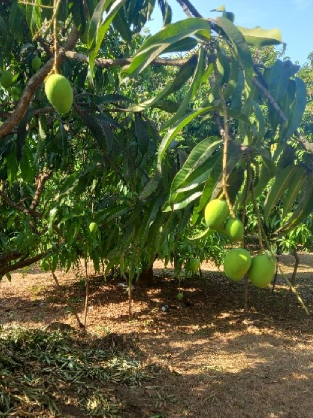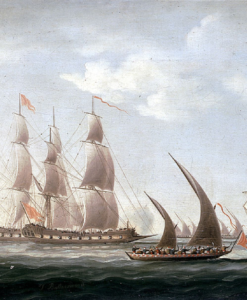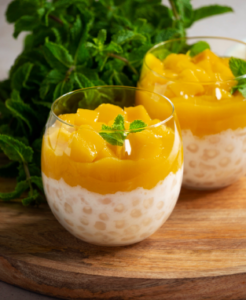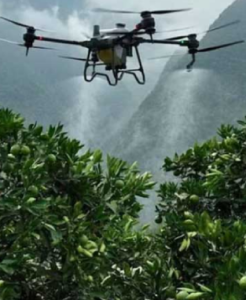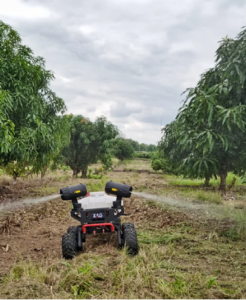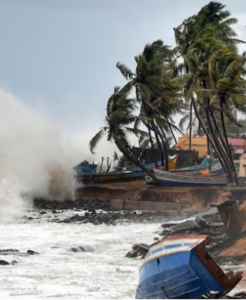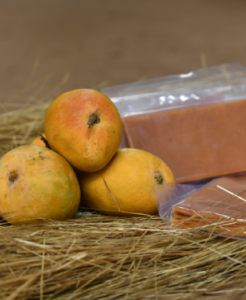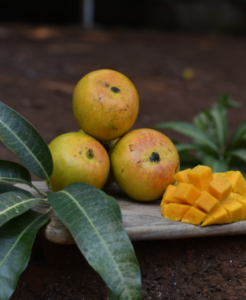The minimum vertical distance between any two trees or plants is referred as the planting distance and this varies depending upon many factors. The principles in deciding the planting distances are the following:
1. Trees when fully grown, the fringes of trees should touch each other but the branches should not interlock
2. Trees root will spread over a much larger area than top and there should be proper room for the roots to feed without competition.
Factors which decide the planting distance are the following:
1. Kind of fruit trees – Alphonso mango or other mangoes are planted at a
distance of 10m x 10m, guavas at a distance of 6m X 6m while papayas are planted at a distance of 2m x 2m.
2. Rainfall-wider spacing should be given in low rainfall areas than the high
rainfall areas for a kind of tree.
3. Soil type and soil fertility- in heavy soils less spacing should be given because
the top and root growth are limited.
4. Rootstocks- trees of the same variety grafted on different root stocks will grow
to different sizes and as such require different planting distances. eg. Apple
5. Pruning and training- trees trained on head system requires closer spacing
than the other type of training system.
6. Irrigation system
In general, if the spacing is too wide, it is obvious that the yield per unit area
would be greatly reduced. Only in very, exceptional cases would this be justifiable. Ordinarily it is more profitable to plant the trees closer together and supply the needed water and food materials. If the trees are too close together, the trees grow tall rendering pruning, spraying and harvesting difficult. There is root competition and inadequate nutrition and the trees as
such give less yield and produce smaller fruits of poor colour. Cultivation also becomes difficult in the closely planted orchards. Close planting results in a greater yield per unit area in the early life of the tree but less in the more important later years. The total numbers of trees per hectare for various important horticultural crops under square system of planting are given below:
| SR NO. | PLANTING DISTANCE (M) | CROP | NO OF TREES/HECTARE |
|---|---|---|---|
| 1 | 0.22 X 0.65 X 0.75 | Pineapple | 63700 |
| 2 | 2 X 2 | Dwarf Papaya and Banana | 2500 |
| 3 | 1.8 X 2.5 | Grape | 2222 |
| 4 | 3 X 3 | Tall Papaya and Banana | 1111 |
| 5 | 4 X 4 | Custard Apple and Hazelnut | 635 |
| 6 | 5 X 5 | Pomegranate | 400 |
| 7 | 6 X 6 | Guava, Pumelo, Grapefruit, Acid Lime | 277 |
| 8 | 7 X 7 | Peach and Plum | 204 |
| 9 | 8 X 8 | Ber, Litchi | 156 |
| 10 | 9 X 9 | Sapota | 121 |
| 11 | 10 X 10 | Mango, Walnut, Cherry and Date Palm | 100 |
| 12 | 12 X 12 | Jamun, Tamarind, Pecan Nut and Jackfruit | 68 |
Table: Planting distance and number of Alphonso mango trees or other fruit tree per
hectare Crop
The calculation of the number of trees per hectare when planted under square or
rectangular system is very easy, and is obtained by dividing the total area ‘by the
area occupied by each tree (a x a in square system or 1 x b in rectangular system).
The theoretical and the actual number of possible trees which can be planted in an
orchard depends upon the shape of the field. In practice, in large fields, the
percentage difference between the theoretical number and the actual number
possible will be less. It may be seen that hexagonal accommodates 15% more
number of plants while triangular system accommodates 11% lesser number of
plants.
Planting Season
The season of planting varies with different fruits and local conditions. There are two seasons of planting in vogue in India.
A. Monsoon (June – August) – Alphonso mango
B. Spring (February – March)
Monsoon season is considered to be the best for planting evergreen fruit trees like citrus, mango, sapota and guava. If the trees are planted early in the rainy season they soon establish themselves and grow vigorously. Deciduous trees may be planted during the dormant period without shock Care should be taken that planting is done before the growth starts, otherwise trees suffer severely and will be in poor condition to withstand the next hot weather.
Planting Methods
After locating the positions of the orchard trees, it is important that the trees are planted exactly where the stakes stood. It can be easily done with the help of a planting board. The planting board is usually of 15m long, 10 cm wide and 2.5cm thick with a central notch and one hole on either end the central notch and the two holes (one on either end) are in a straight line. The planting board is placed in such a way that the stake (tree marker) fits into the central notch. Two small stakes are inserted one in each end hole. The planting board along with the tree marker is then lifted straight up without disturbing the end stakes. A pit of about 1 m cube or of the
desired dimensions at the position of the tree marker is then dug.
The pits are allowed to wither for few weeks before planting in some cases. The pits
are then filled with top soil already mixed with red earth and well rotten farm yard
manure. Irrigation is then applied to enable the contents of the pits to settle down
properly. In the event of depressions taking place as a result of irrigation, more soil
should be added to the pits to fill them to the level of land. The pits are then ready for
planting.
Transplanting
The trees should be planted approximately where the original pegs were placed. This is achieved by replacing the planting board in position with the help of the guide pegs and the stem of the trees is brought to the central notch with the help of a hand hoe. One of the most common mistakes is that of planting the trees too deep. The plants should be sent in such a way that the bud union remains slightly above the ground level. The trees in the field should be planted as deep as they stood in the nursery. The trees are irrigated soon after planting. This consolidates the soil and helps the roots to establish contact with it and to secure a supply of water quickly. A small basin may be made around the tree for this purpose. Planting if taken up during the rains, this basin should be demolished within a day or two so that water will not collect around the tree. This is more dangerous on heavy than light soils. Spring winds cause damage to the growing plants by giving a constant shaking. To prevent this, plants should be staked when planted. Some young plants are subject to considerable injury from sunburn particularly if they have been trained to single stem with no branches for 45cm or more from the ground. Such trunk can be protected by wrapping them with paper or other material or by painting them with white wash. The latter is probably best, as most materials wrapped around the trunk would be subject to termite attack.

